Disclosure: This article contains affiliate links. We may earn a commission from purchases at no extra cost to you, which helps our travel content.
¡Hola, fellow food adventurers! There's something magical about how food tells the story of a place—its history, its people, its soul. When I decided to squeeze in a weekend getaway between quarterly reports, Colombia's Caribbean coast called to me like the scent of sancocho drifting through an open window. As a fourth-generation Japanese-American who grew up watching my grandmother sketch buildings while teaching me about the importance of cultural preservation, I've always been fascinated by how traditions evolve while maintaining their essence. The Atlantic coast of Colombia, particularly the neighboring cities of Soledad and Barranquilla, offers this perfect fusion—where African, Indigenous, and Spanish influences create a culinary landscape as dynamic as the architecture that houses it. Grab your appetite and join me on this whirlwind sabor tour that proves you don't need deep pockets to experience deep flavors!
Street Food Treasures: Where the Magic Begins
If there's one thing my finance brain appreciates, it's maximum return on minimal investment—and Colombian street food delivers exactly that. My adventure began in Soledad's bustling market streets, where vendors called out their offerings with a musical cadence that reminded me of my grandmother's stories about traditional Japanese marketplaces.
The arepa de huevo became my morning ritual—a golden corn pocket stuffed with egg and sometimes meat that's deep-fried to perfection. At only about 3,000 COP (less than $1 USD), it's the ultimate budget breakfast that somehow manages to fuel several hours of exploration.
My absolute favorite discovery was carimañolas—yuca fritters stuffed with seasoned ground beef or cheese. The contrast between the crispy exterior and the soft, flavorful filling creates this perfect textural dance that had me coming back daily. One vendor near Calle 30 in Barranquilla, a grandmother with hands that moved with architectural precision, told me her family has been making them the same way for five generations.
Butifarras soledeñas deserve special mention—these small sausages specific to Soledad pack intense flavor into tiny packages and are typically served with lime and a tangy coleslaw. The vendor laughed at my enthusiasm as I practiced my Spanish, telling me I had the appetite of someone twice my size.
For capturing these vibrant street food scenes, my compact camera proved invaluable—small enough not to draw attention but powerful enough to capture the steam rising from fresh empanadas in the early morning light.
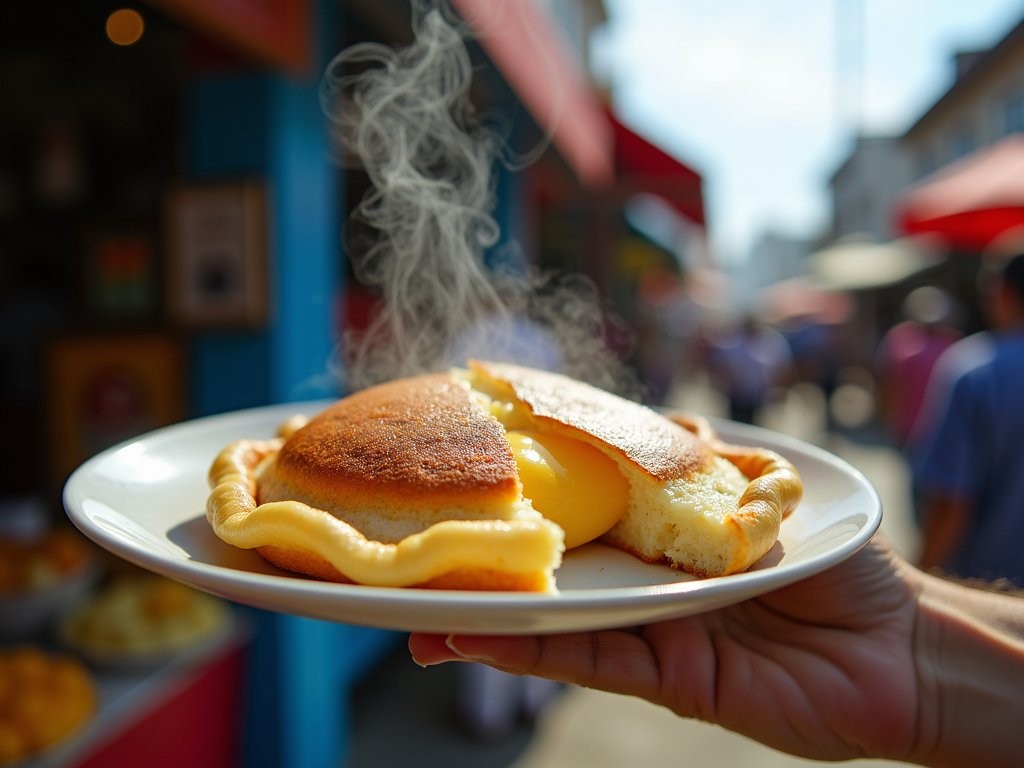
💡 Pro Tips
- Visit markets between 7-9am for the freshest offerings and to watch locals go about their morning routines
- Always carry small bills (5,000 and 10,000 COP notes) for street vendors
- Look for stalls with lines of locals—they know where the best food is
Barranquilla's Seafood Scene: Ocean to Table
Growing up in Fresno, I was about as far from the ocean as you could get in California. Maybe that's why coastal cuisine always feels like such a luxury to me, even when it's surprisingly affordable. In Barranquilla, the proximity to the Caribbean means seafood isn't a special occasion meal—it's everyday sustenance, prepared with techniques passed down through generations.
My first seafood revelation came at Mercado de Pescado in Barranquilla, where fishermen bring their morning catches directly to vendors. The sensory experience is overwhelming in the best way—the calls of vendors, the gleam of fresh fish scales, the salty air. Here, I watched in awe as a woman deftly prepared ceviche de camarón (shrimp ceviche) with lime juice so fresh it was squeezed before my eyes.
Mojarra frita quickly became my go-to lunch—a whole tilapia fried to crispy perfection, usually served with coconut rice, patacones (fried plantains), and a simple salad. At the unassuming Restaurant La Costa near the waterfront, I had a version so perfect that I actually closed my eyes while eating it, prompting laughter from the waiter who told me, "La comida se disfruta con todos los sentidos" (Food is enjoyed with all the senses).
The most surprising discovery was arroz con coco y camarones—coconut rice with shrimp. The subtle sweetness of the coconut against the savory seafood created this perfect balance that reminded me of some Japanese dishes that play with similar contrasts. I found myself sketching the presentation in my travel journal, channeling my grandmother's architectural eye for detail.
For those looking to sample the best seafood without breaking the bank, skip the touristy spots on the main strips and head to where the locals eat. A particularly memorable meal at a plastic-table establishment called El Muelle cost me just 15,000 COP (about $4 USD) for a feast that would have been triple the price in Atlanta.
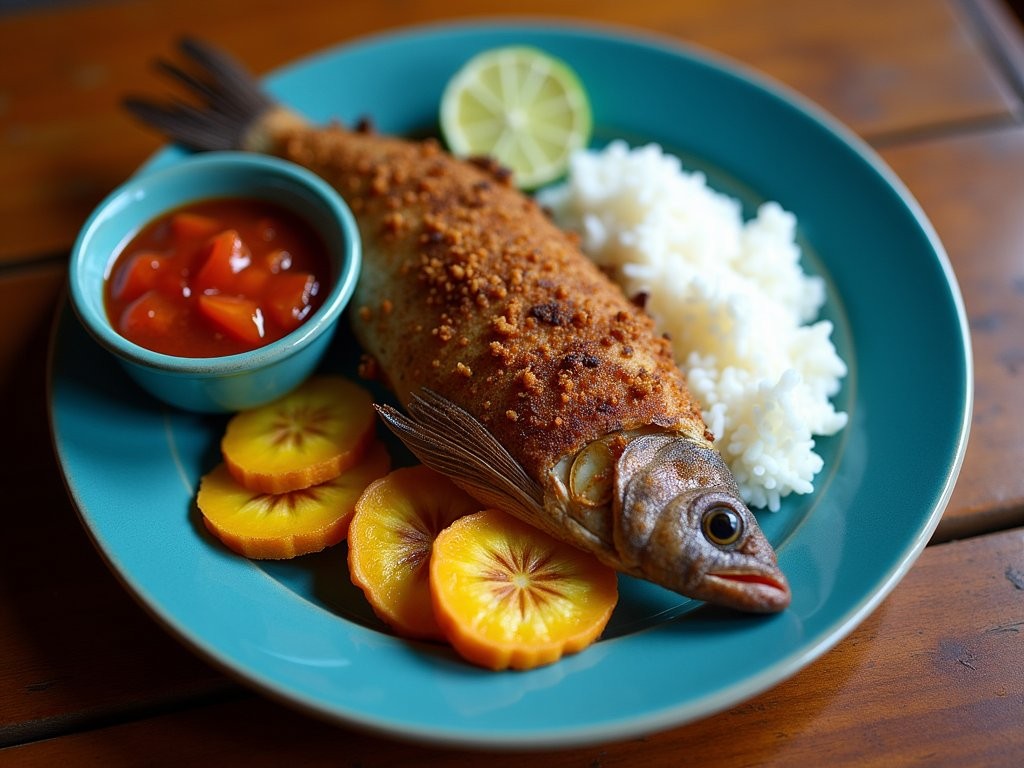
💡 Pro Tips
- Visit the fish market early (before 10am) to see the best selection and watch local chefs making their purchases
- Don't be afraid of small, family-run restaurants with plastic chairs—they often have the most authentic food
- Learn the phrase 'Pescado del día' (fish of the day) for the freshest options
Hidden Architectural Gems: Where Food Meets History
My dual obsessions with architecture and finding hidden spots led me to some of the most interesting culinary experiences in both cities. There's something about the physical spaces where food is prepared and enjoyed that adds an extra dimension to the flavors.
In Barranquilla's Barrio El Prado, I discovered a colonial-era building that had been converted into a small restaurant called Casa Antigua. The high ceilings and preserved wooden beams created natural ventilation that kept the space cool even in the Caribbean heat. Here, I tried mote de queso—a cheese and yam soup that sounds simple but delivers complex flavors. The owner explained that the building was once a merchant's home, and the kitchen still uses the original brick oven from the 1800s.
Soledad surprised me with its blend of traditional and modern architecture. At a place called Rincón Soledeño, housed in what was once a family compound with a central courtyard, I enjoyed sancocho trifásico—a hearty soup made with three types of meat (chicken, beef, and pork). The courtyard featured hand-painted tiles that told stories of the region's history, and each table was positioned to catch the afternoon breeze.
My finance background had me calculating the incredible value these experiences offered. Most meals at these architectural gems cost between 12,000-25,000 COP ($3-7 USD), proving that cultural immersion doesn't have to drain your wallet.
For documenting these spaces, I relied on my travel tripod to capture the low-light interiors without flash, allowing me to respect the ambiance while still getting detailed shots of both the food and architectural elements.

💡 Pro Tips
- Ask locals about buildings with history—many restaurants don't advertise their architectural significance
- Visit during off-peak hours (2-5pm) to have more time to appreciate the spaces and talk with staff about the buildings
- Look for places with interior courtyards, which are traditional to Colombian colonial architecture
The Carnival Influence: Festive Flavors Year-Round
Barranquilla's famous Carnival may only happen once a year, but its spirit infuses the local food culture year-round. As someone who studies how traditions evolve in modern contexts, I was fascinated by how carnival flavors have become everyday staples while maintaining their festive associations.
Butifarra sausages, traditionally eaten during carnival celebrations, are now available daily but still carry that sense of celebration. At a small family-run shop called La Butifarra Feliz, I watched three generations working together to prepare these seasoned meat delicacies. The grandmother seasoned, the mother shaped, and the daughter packaged—a living example of tradition in motion.
Street vendors selling raspao (Colombian snow cones) decorate their carts with carnival colors year-round. These refreshing treats, topped with condensed milk and fruit syrups, saved me during the midday heat. My favorite vendor, a man named Carlos near Plaza San Nicolás, told me he'd been operating the same cart for 32 years and had participated in every carnival during that time.
Arepa de choclo con queso (sweet corn arepa with cheese) vendors often display photos of themselves in carnival costumes while serving these sweet-savory treats that fuel many carnival dancers. The contrast between the sweet corn and salty cheese creates this perfect balance that kept me coming back daily.
To stay hydrated while exploring in the heat, I relied on my insulated water bottle which kept water cold for hours even in the Caribbean sun. This saved me money on bottled water and reduced plastic waste—a small way to practice environmental responsibility while traveling.
During my exploration, I discovered that many restaurants offer "Carnival Platters" year-round—sampling boards of traditional festival foods that let you taste multiple specialties in one meal. At La Cueva restaurant, their platter included miniature versions of bollo limpio (corn dough wrapped in corn husks), carimañolas, empanadas, and butifarras for just 18,000 COP (about $5 USD).
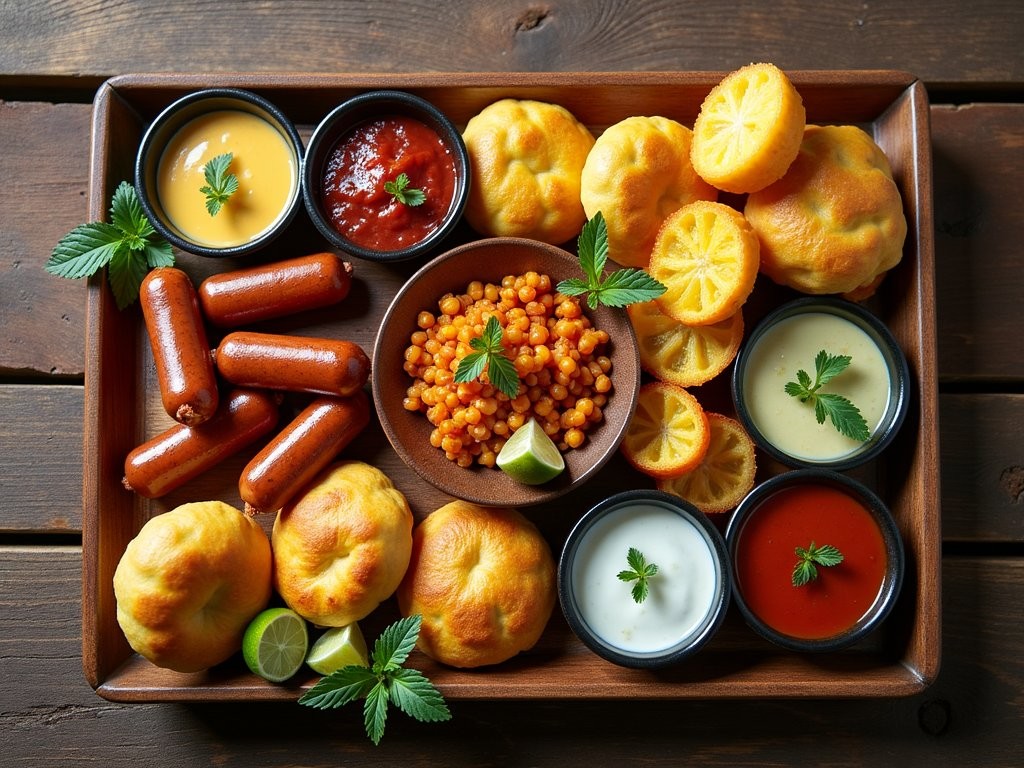
💡 Pro Tips
- Ask vendors about their carnival experiences—many have fascinating stories and photos to share
- Look for restaurants advertising 'Plato Carnavalero' for the best sampling options
- Try traditional carnival drinks like *chicha* (fermented corn drink) and *guarapo* (sugarcane juice) that are available year-round
Sweet Endings: Desserts That Tell Cultural Stories
If you want to understand the multicultural history of Colombia's Atlantic coast, look no further than its desserts. Each sweet treat tells a story of cultural fusion that resonates with my own mixed heritage.
Cocadas quickly became my evening ritual—these coconut sweets come in various forms, from soft and gooey to firm and caramelized. In Soledad's central plaza, an elderly vendor named Doña Elena makes them using her grandmother's recipe, which she recited to me from memory. The African influence is evident in the technique, while Spanish colonial ingredients like cinnamon create layers of flavor.
In Barranquilla, I discovered enyucado—a cassava and coconut cake that reflects indigenous ingredients adapted through European baking methods. The dense, slightly chewy texture paired perfectly with a cup of locally grown coffee. At Dulcería La Especial, they serve it warm with a small scoop of arequipe (similar to dulce de leche).
Perhaps most interesting to me was borrachito, a rum-soaked cake whose name literally means "little drunk one." This dessert shows the Spanish influence but has evolved with local ingredients like tropical fruits. At a small bakery called Pan y Canela near my hostel, the owner explained how each family has their own closely guarded recipe.
I found myself drawing parallels to Japanese wagashi, which similarly uses local ingredients to tell cultural stories. There's something universal about how sweets become vessels for heritage.
For those with dietary restrictions, I was pleasantly surprised to find that many traditional coconut-based desserts are naturally gluten-free, and vendors were always happy to explain ingredients when asked. I tracked my favorites using my travel journal where I could note ingredients, cultural origins, and my personal ratings of each treat—something that's become a tradition during all my culinary adventures.
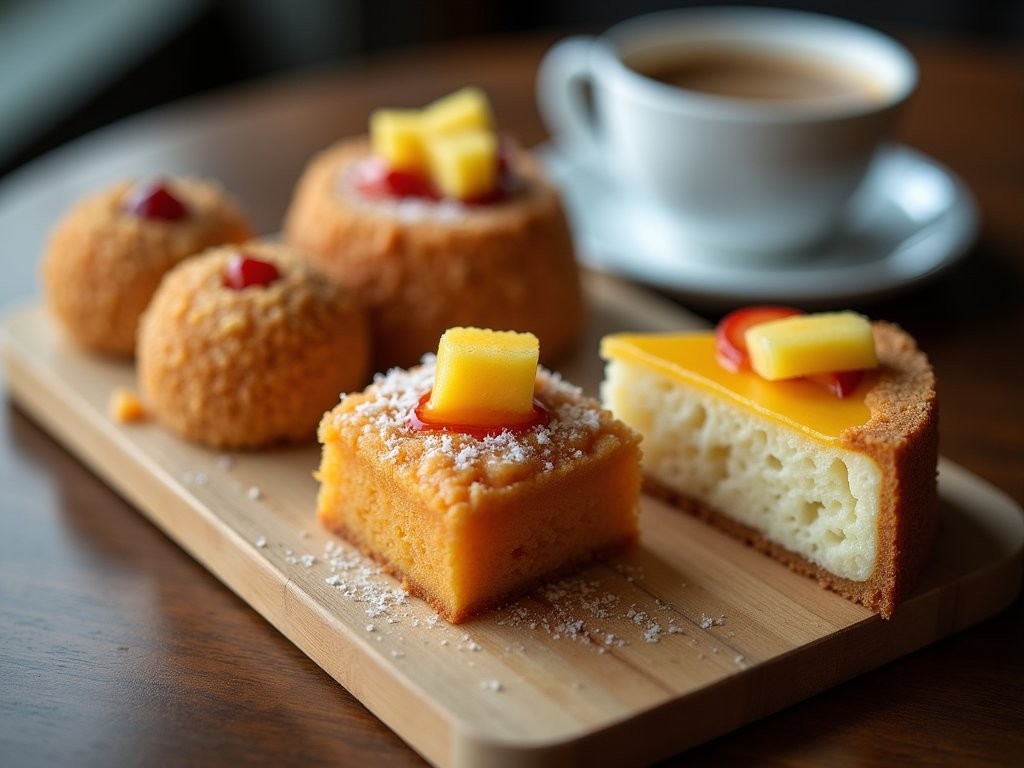
💡 Pro Tips
- Look for dessert vendors in the main plazas after 4pm when locals enjoy their merienda (afternoon snack)
- Ask about seasonal fruit desserts—some of the best sweets are only available when specific fruits are in season
- Coffee and dessert pairings are taken seriously—ask for recommendations for the perfect match
Final Thoughts
As my weekend adventure along Colombia's Atlantic coast came to an end, I found myself with a full heart, satisfied taste buds, and a deeper appreciation for how food preserves cultural heritage while constantly evolving. The fusion of indigenous, African, and European influences in every bite mirrors my own journey of connecting with my Japanese heritage while embracing my American identity. These coastal cities might not top the typical tourist lists, but for food adventurers seeking authentic experiences on a budget, Soledad and Barranquilla offer an unparalleled feast for both stomach and soul. Whether you're scaling literal cliffs (my usual travel preference) or the metaphorical heights of culinary discovery, Colombia's Caribbean coast proves that some of life's richest experiences come with the most modest price tags. ¡Buen provecho y hasta pronto!
✨ Key Takeaways
- Colombian Caribbean cuisine offers incredible value—most meals cost under $7 USD for generous portions
- The best food experiences often happen in architecturally significant buildings that tell their own cultural stories
- Street food provides the most authentic taste of local flavors and traditions
- Carnival influences permeate food culture year-round, not just during festival season
📋 Practical Information
Best Time to Visit
year-round (though January-March offers carnival season)
Budget Estimate
$30-50 USD/day including accommodations
Recommended Duration
2-3 days
Difficulty Level
Easy

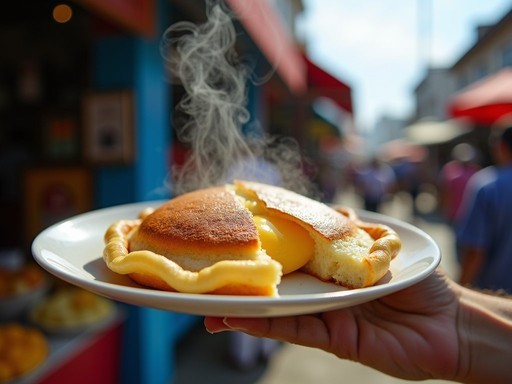










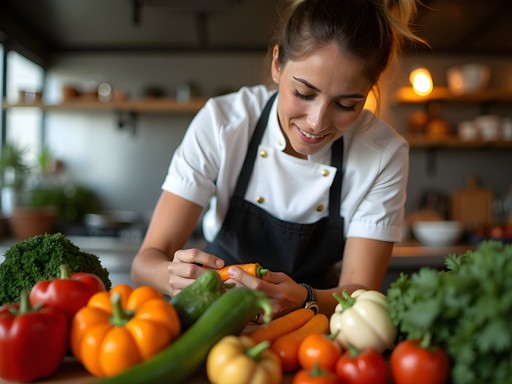
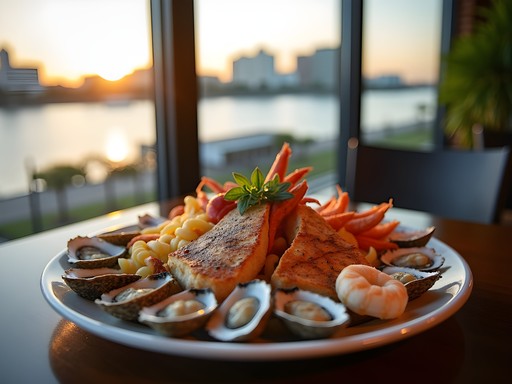
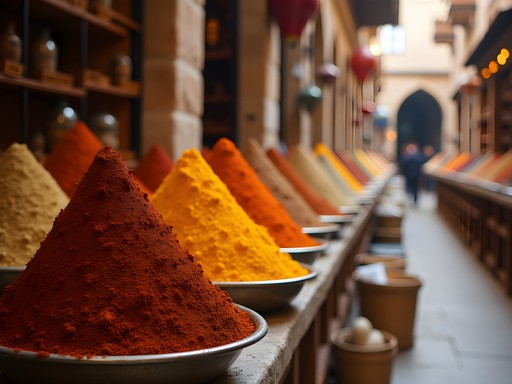
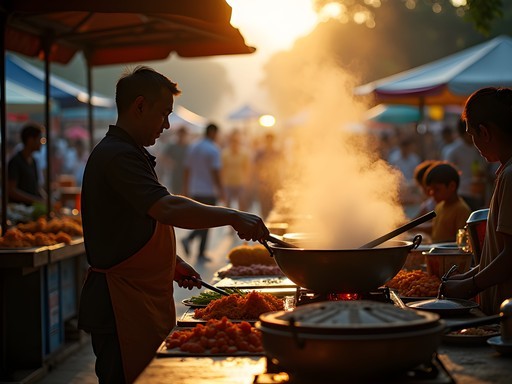
Comments
skylife
This looks amazing! I'm planning to visit in February - is that a good time for the Carnival you mentioned? How easy is it to get between Soledad and Barranquilla?
Skyler Tanaka
February is perfect for Carnival! It's usually held in February (sometimes early March), and it's absolutely worth planning your trip around. Getting between Soledad and Barranquilla is super easy - they're basically connected. Taxis are affordable, or you can use the local buses which run frequently. Just prepare for crowds during Carnival season!
skylife
Thanks so much! Definitely going to time my visit with Carnival then. Can't wait to try all this food!
Casey Andersson
Skyler, your post brought back so many memories! I spent two weeks along Colombia's Caribbean coast last year and fell completely in love with the food scene. The way you described those buttery arepas de huevo was spot on - that moment when you bite in and the egg yolk runs... pure magic! I found this tiny place in Soledad called Doña Clara's that served the most incredible cazuela de mariscos I've ever had. Did you make it to the Mercado Público in Barranquilla? The fruit stalls there were a sensory overload in the best possible way. I filled my insulated water bottle with fresh coconut water every morning and sipped it while wandering around. Your post has me planning another trip back!
Skyler Tanaka
Thanks Casey! I did hit up Mercado Público - those fruit stalls were incredible! I missed Doña Clara's though - adding it to my list for next time. The coconut water there is something else, isn't it?
Casey Andersson
The coconut water is life-changing! Definitely check out Doña Clara's next visit - it's tucked away on a side street but the locals all know it. Worth the hunt!
wildperson
Those arepas de huevo look incredible! Making me hungry just looking at the photos 🤤
Taylor Moreau
Excellent coverage of the regional cuisine, Skyler. I particularly appreciated your insights on how the carnival culture influences the local food scene year-round. As someone who travels to Colombia regularly for business, I've found that understanding these cultural connections provides valuable context for my local interactions. Your section on architectural gems doubling as culinary hotspots is spot on - that colonial building housing the ceviche restaurant is indeed a hidden treasure. One addition I might suggest: the Arab influence on the Atlantic coast's cuisine is fascinating, particularly in dishes like kibbeh that have been adapted with local ingredients. Looking forward to your next culinary exploration.
Skyler Tanaka
Thanks for that excellent point about the Arab influence, Taylor! You're absolutely right - I noticed those Middle Eastern touches but didn't dive deep enough into that aspect. The kibbeh variations are fascinating examples of cultural fusion. Really appreciate your thoughtful addition!
smartlegend
Is it easy to find vegetarian options there? Going with my partner who doesn't eat meat but I really want to experience this food scene!
Taylor Moreau
Not the author, but I was there recently on business. While seafood and meat dominate, I found several restaurants in Barranquilla with excellent vegetarian options. The patacones (fried plantains) can be topped with vegetables and cheese instead of meat. There's also a wonderful plant-based restaurant called Verde Vida near Parque Washington that my Colombian colleagues recommended. The yuca fritters and coconut rice dishes are generally vegetarian-friendly as well.
smartlegend
Thanks so much for this info! Verde Vida is going on my list!
travelgal
Those sunset pics of the seafood dinner by the water are STUNNING! Saved this post for future travel plans!
Nicole Russell
Skyler!!! This post is EVERYTHING! 🔥 I literally just got back from Colombia last month but totally missed Soledad. Big mistake! Your description of those arepas con queso has me planning a return trip ASAP! The way you captured the blend of Caribbean and Colombian flavors is spot on. I found the street food scene in Colombia to be so underrated compared to other Latin American destinations. Did you make it to any of the local markets? I found my pocket Spanish phrasebook super helpful when navigating food stalls - the vendors appreciated my terrible attempts at ordering in Spanish lol!
moonninja
Planning to visit in January - is that a good time for food festivals or any special seasonal dishes I should look out for?
Skyler Tanaka
January is perfect! Pre-carnival season starts ramping up and you'll find more street vendors selling traditional carnival foods. Don't miss the butifarra soledeña (local sausage) and carimañolas (yuca fritters stuffed with meat). The weather is also ideal for outdoor dining!
blueguide
I was in Barranquilla last year and the seafood was out of this world! That little place you mentioned on Carrera 44 with the coconut rice and fried red snapper? Still dream about it. Did you try the sopa de mondongo? I couldn't get myself to do it, but my husband loved it.
Skyler Tanaka
Yes! The coconut rice is incredible there. I did try the mondongo - definitely an acquired taste but I'm glad I experienced it. The buttery texture was actually better than I expected!
blueguide
You're braver than me! Maybe next time I'll give it a try. The fruit juices were amazing too - that tamarind one was my favorite.
winterstar
Those arepas de huevo look incredible! Making me hungry just looking at the photos!
Venture X
Premium card with 2X miles, $300 travel credit, Priority Pass